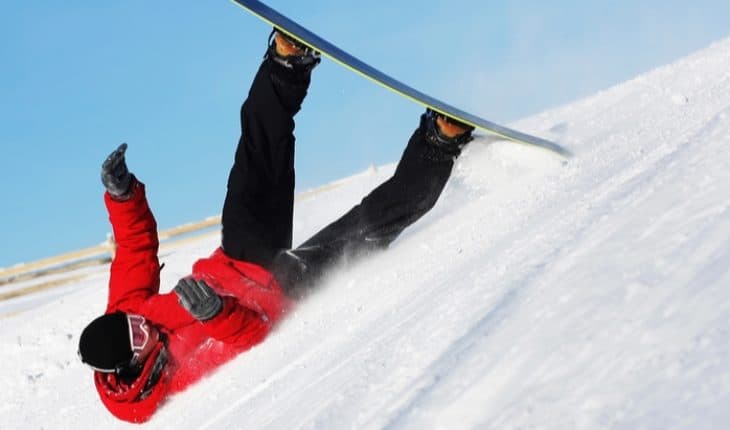For those heading off to colder climes over the next few weeks for their annual ski holiday, it’s common to worry about the potential health risks associated with such a sport, particularly where back health is concerned. In fact, for many people living with back and neck pain, it’s easy to understand why going skiing or taking part in other winter sports such as snowboarding couldn’t be further from their minds.
Muscle strains in the lower back, inflammation of the small joints on the back of the spine – particularly common among snowboarders and the side-on posture they need to adopt – and whiplash can often go hand in hand with skiing and ruin a much longed-for break.
However, with the right care and preparation, casual skiing can actually have numerous benefits for those affected by back and neck pain. Importantly, it’s a great, low-impact form of exercise – which, like swimming, is highly beneficial for back pain and for strengthening the muscles supporting the spine.
However, with the right care and preparation, casual skiing can actually have numerous benefits for those affected by back and neck pain. Importantly, it’s a great, low-impact form of exercise – which, like swimming, is highly beneficial for back pain and for strengthening the muscles supporting the spine.
Whether you’re a seasoned skier or trying it for the very first time and you have a back issue, you’ll be fine as long as you’re sensible and adjust your skiing habits and intensity in line with your ability and levels of comfort. It’s also crucial to build up your strength before your trip in an effective manner, often as early as August or September for New Year holidays.
By following my top tips and advice below, ski enthusiasts should still be able to enjoy their love for the sport – and not just the apres-ski – well past their 50’s…
- Stretching or some light massage – skiing puts huge amounts of pressure on the legs and lower back muscles, which are simply not conditioned to deal with the unique duration often spent on the slopes. Simple, regular stretching or a massage at the end of each day will help keep muscles in good condition. A warm shower or bath will also provide welcome relief.
- Cold ice – repetitive stress and fatigue of the lower back are extremely common among skiers. Cold ice placed on the base of the spine for five minutes at the end of the day will help ease any inflammation.
- Realign your posture – lying over a rolled-up towel for five-minute intervals will help arch the lower back, which is very important to counteract the constant ‘forward bent’ position skiing requires.
If back pain strikes when you’re half-way down a mountain-side, I would always recommend not stopping completely as chances are the cold will immediately cause you to ‘stiffen’. Instead, back off the intensity, find a less steep slope and move slowly to the bottom of the run. Try to stand up tall with good posture as this will help if you’ve irritated the discs and prevent making things worse. Remember, your body is more at risk in the mornings, before it has had a proper chance to effectively warm-up. A couple of great exercises to perform to help relieve pain include:
- A side bend – whereby you run your hand down the side of your thigh, while slowly bending over to that same side. With your other arm, stretch over your head to release some of the muscles on the side of your lower back. Do not bend forwards. Repeat this both sides.
- You can also perform this movement on one knee, bending away from the knee that is on the floor. Again, ensure good posture and hold the stretch for 10-15 seconds and repeat a couple of times each side.
Some good exercises to build into your daily routine in the months leading up to a ski-holiday, include the following:
- Begin with lower impact exercises for fitness, such as the cross trainer. Each month you should be increasing the resistance on the machine so your leg muscles begin to burn before your fitness (heart and lungs).
- Include exercises like the leg press to really strengthen your legs. The goal here is higher reps, 15-25 rather than 8-10 reps.
- Some basic core exercises like wood chops (in the gym) or dead bugs (at home) would be a nice addition for the lower back, alongside some side planks. Again, higher reps, 15-25 here for 3 x sets of each exercise.
- Add in ‘lunge twists’ later on to help strengthen the legs, lower back and core simultaneously and help develop some balance to help vulnerable knees. 15-25 walking lunges is recommended, with a slow twist on each lunge, to the side of the forward leg.
Most ski-related injuries are related to our appetite for risk and adventure on the slopes. It’s great to push ourselves and try new runs, but caution is always recommended. As for the slaloms and moguls – unless you have a burning desire to professionally ski or are looking to injure yourself, leave them to the professionals!
Mr Michael Fatica is Lead Consultant Osteopath at The Mayfair Clinic (www.themayfairclinic.com)
- WFH doesn’t have to be a pain - 15th June 2023
- Back pain programme has lasting results - 7th October 2022
- How to enjoy skiing and keep your back healthy - 15th January 2019







